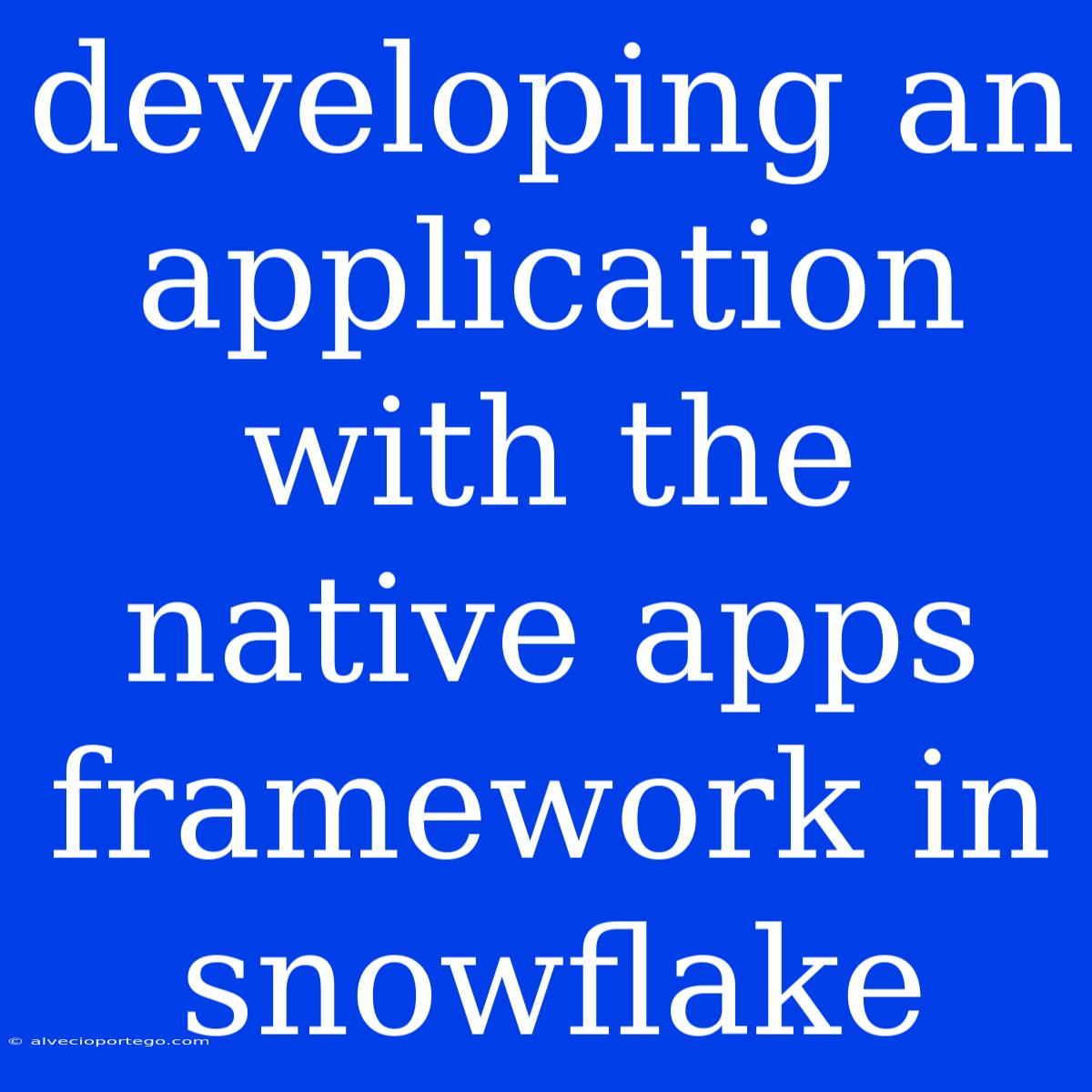Developing Applications with the Native Apps Framework in Snowflake
Snowflake's Native Apps Framework is a powerful tool that enables you to build and deploy custom applications directly within the Snowflake platform. This allows for seamless integration with Snowflake's data and functionality, making it ideal for developing data-driven applications.
Understanding the Native Apps Framework
The Native Apps Framework allows developers to create applications that leverage Snowflake's capabilities, including:
- Data access: Read, write, and manipulate data stored within Snowflake.
- Data transformation: Use SQL and JavaScript to process and transform data.
- Data visualization: Build dashboards and reports using pre-built components or custom code.
- Integration with external services: Connect to external applications and APIs.
- User interface development: Build web-based user interfaces for your applications.
Key Components of the Framework
The Native Apps Framework consists of several key components:
- Native Apps UI: A web-based interface for managing and deploying apps.
- Snowflake App Development Kit (ADK): A JavaScript library that provides access to Snowflake's API and functionality.
- Snowpipe: Stream data from external sources into Snowflake for real-time processing.
- Snowflake Tasks: Execute scheduled or triggered tasks that can be integrated into your applications.
Building Your First Native App
Let's dive into a basic example to illustrate the framework's functionality. We will build a simple application that retrieves and displays customer data from a Snowflake table.
Step 1: Create a New App
- Navigate to the Native Apps UI in the Snowflake web interface.
- Click "Create App".
- Provide a name and description for your app.
Step 2: Develop the Frontend
- Use HTML, CSS, and JavaScript to build the front-end user interface.
- Include the Snowflake ADK library in your code to interact with Snowflake.
Step 3: Develop the Backend Logic
- Write JavaScript code using the ADK to retrieve customer data from your Snowflake table.
- Use SQL queries within your JavaScript code to interact with the data.
Step 4: Deploy Your App
- Configure your app's deployment settings in the Native Apps UI.
- Deploy your app to the Snowflake platform.
- Access and use your newly created app from within the Snowflake interface.
Advantages of Using the Native Apps Framework
- Integrated development environment: Develop and deploy applications directly within the Snowflake platform.
- Enhanced security: Leverage Snowflake's robust security features for your applications.
- Scalability and performance: Benefit from Snowflake's inherent scalability and performance.
- Data governance: Implement data governance policies and controls within your applications.
- Seamless integration: Integrate with existing Snowflake functionality and data.
Conclusion
Snowflake's Native Apps Framework provides a powerful and flexible platform for developing data-driven applications. Its seamless integration with Snowflake's data and functionality makes it a compelling choice for organizations looking to build custom applications within their data ecosystem. By leveraging this framework, developers can create powerful and innovative solutions that unlock the full potential of their data.

